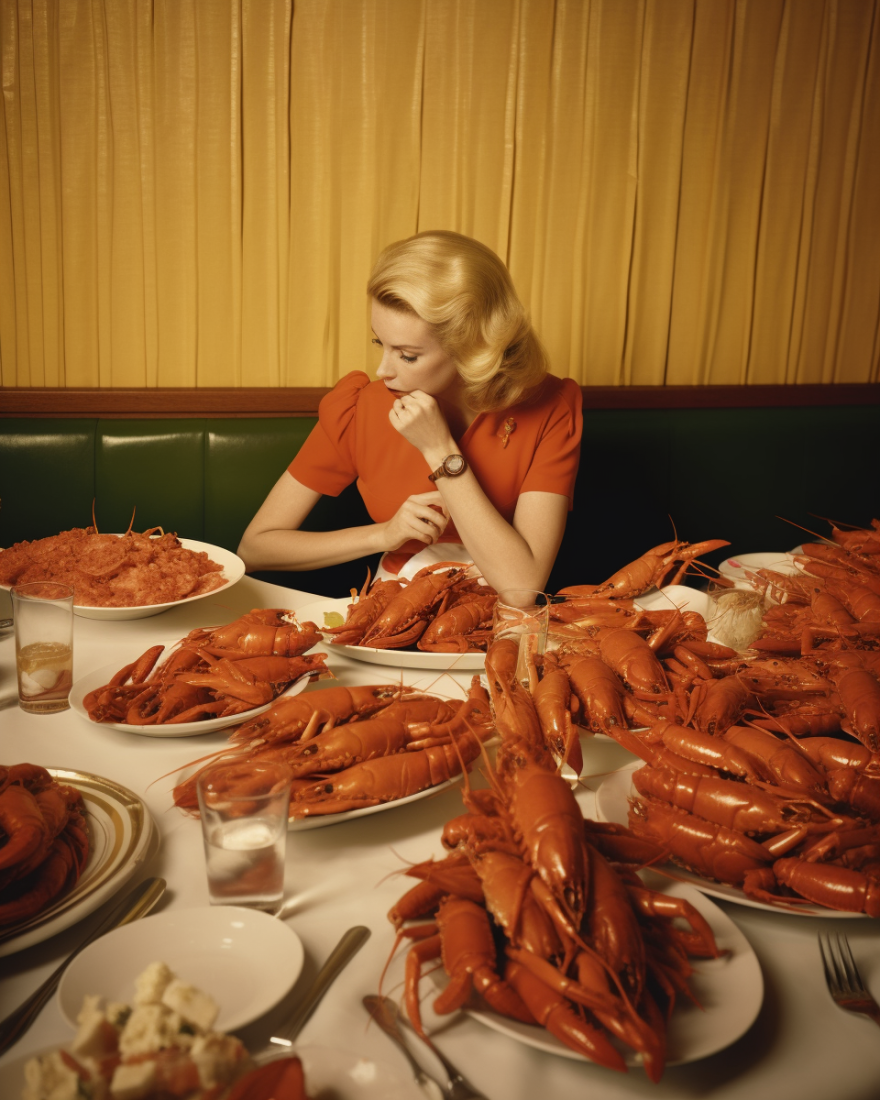Detroit-based photography and creative direction couple Michelle Gerard and Jenna Belevender have been working as collaborators under the name Gerard + Belevender since 2020, and have produced some seriously eye-catching photography. Recently, their embrace of AI technology in their work has attracted even more of an audience.
Gerard + Belevender’s work is mainly commercial photography for brands. In Gerard’s words, most of the duo’s work is “very maximalist, nostalgic, and over-the-top.”
“We love to create a scene that just looks like your nineties childhood bedroom,” Gerard said.
Gerard has been following the progression of AI since its early iterations, such as DALL-E, a text-to-image AI model developed by OpenAI. Her first exposure to using AI in her work came when she was having a difficult time finding the right images for a mood board she was creating to convey her ideas to a client. Gerard decided to type in some words into an AI software. It ended up yielding the images she had been looking for, saving her hours of scrolling on Pinterest and Google.
Even with AI technology’s time-saving benefits, Gerard + Belevender is using it sparingly.
“We're not using it to create the final image,” Gerard said. “We're using it to enhance our images or to make parts of our job easier or better.”

The couple was also curious to see what AI would do with their previously existing work. In a recent experiment, they took a photo they had created in real life called “Prison Lobster,” and fed it into an AI program. Playing around with different artists and photography styles, they were able to see whether or not a wide variety of images would be worth actualizing.
“So it's also a very accessible way to make images as people who have way more ideas than we do time and money,” Gerard said.
From their original photo, which featured a prison plate piled high with lobsters, they ended up with an image of a woman sitting at a table with copious amounts of lobster. The photo is the duo’s most-liked photo on Instagram, and has garnered both praise and criticism.
Gerard and Belevender understand both of these reactions. Gerard noted the efforts to set up guidelines for images that have been generated with AI so that there is no confusion whether or not AI was involved. Belevender also insists on fair compensation for professionals in these industries, which has been of concern.
The duo has been passed up by clients in favor of using AI, and they’ve seen it happen to other creatives as well.
“We live in a very creative community, and we have a lot of illustrator, photographer, and art director friends. Everyone is very consciously curious,” Belevender said. “They're all like, ‘We want to use these. We want to use them as tools, but we want to be paid, and we all don't want to lose our jobs.’”
While the technology is novel, the change it has brought about in the photography industry is nothing new. Gerard recalled the switch to digital photography from film, and the ways innovation has made the medium more accessible.
“The same thing when we went to smartphones, everybody had a camera, everybody's a photographer and we're just here to adapt and use it to our advantage,” Gerard said.

In a photo series commissioned by Morgenmete Journal, titled “The Convergence Diner,” Gerard + Belevender created classic diner scenes with a twist: maraschino cherries on top of beans, multi-yolk eggs, strange waffle grids, and so on.
This bizarre yet visually pleasing diner scene was the program’s best attempt at mashing together all the information it had been fed about diners.
“As I kept trying to work harder at getting the image I want, I also just kept messing it up further and making it look more weird and more alien,” Gerard said. The duo then took inspiration from the AI-generated photos, and made the foods in real life.
Another step in the creation process for this photo series was talking to ChatGPT about the project. Gerard recounted ChatGPT offering up visual applications of scientific theories for this photo series, and the conversational nature of this ideation method. Belevender noted how, while she isn’t super familiar with physics or theories in science, ChatGPT got her thinking in new ways about subjects she might have otherwise missed.
With the legality of AI constantly in flux, the couple continues to keep up with AI’s ever-changing guidelines and practices. While Gerard + Belevender uses AI for inspiration in their work, they are confident that this technology is an enhancement to their work — not a replacement for it.
“I don't think they’ll ever be able to replace our creativity and even just our intuition when we talk to a client,” Belevender said. “You as a person can’t be replaced.”
[Get Stateside on your phone: subscribe on Apple Podcasts, Google Podcasts, or Spotify today.]









